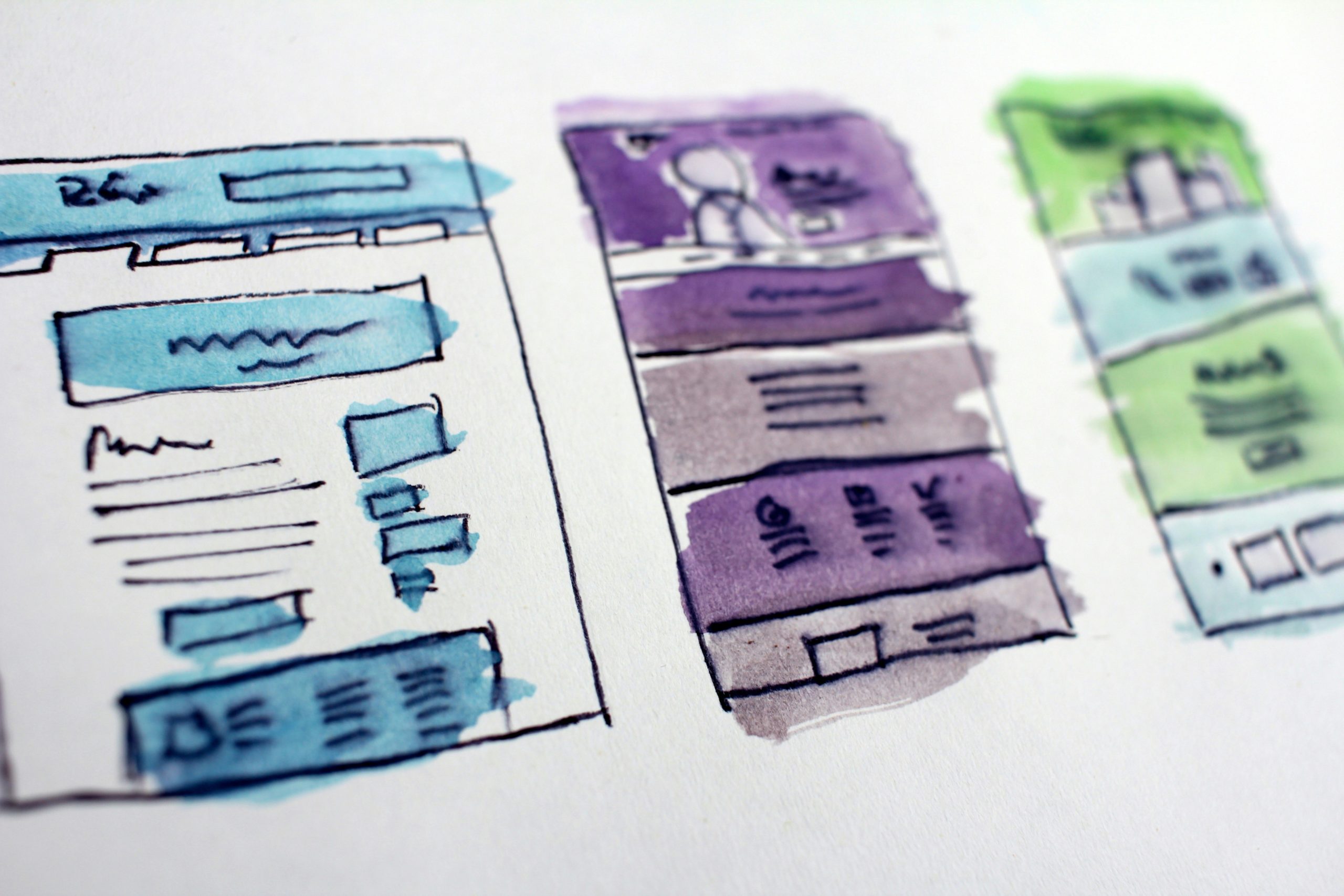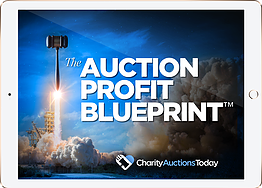DOWNLOAD The Auction Profit Blueprint
The 4 tools BIG organizations use every time to skyrocket auction profits!
The Step-By-Step Guide to stop leaving thousands on the table.
Discover ways to make your donation page clear and compelling. CharityAuctionsToday offers tips on how to create a strong donation page.

In the digital age, the donation page is a crucial element for non-profit organizations. It serves as the primary platform for online fundraising.
However, designing an effective donation page is not as simple as it seems. It requires an understanding of user experience, design principles, and donor psychology.
This article aims to provide a comprehensive guide on donation page best practices. It will equip you with actionable tips and strategies to maximize your online donations.
We will delve into the importance of a clear value proposition on your donation page. A compelling narrative can motivate potential donors to contribute to your cause.
We will also discuss the role of design in creating a user-friendly donation page. A clutter-free and intuitive layout can significantly enhance the donor experience.
The use of high-quality images and videos can create an emotional connection with your donors. Storytelling can further engage your audience and inspire them to donate.
Form design is another critical aspect we will cover. The number of fields, form length, and mobile optimization can greatly impact your conversion rates.
We will explore the importance of a secure and trustworthy payment process. This can reassure your donors and encourage them to complete their donation.
The article will also highlight the role of social proof in building credibility. Testimonials and donor counts can instill confidence in potential donors.
Effective call-to-action buttons can guide your donors towards making a donation. We will share strategies for their placement and wording.
Offering multiple donation amounts and recurring donation options can cater to a wider donor base. We will discuss the benefits of these practices.
Transparency about how donations will be used is crucial. We will explain how to effectively communicate this to your donors.
Finally, we will touch upon the technical aspects of a donation page. From reducing page load times to leveraging analytics, these practices can optimize your donation page performance.
Join us as we navigate through these essential tips for effective donation pages. Let’s create a positive impact together.
Donation pages are complex systems designed to connect organizations with potential donors. They are more than just a simple transaction interface. Instead, they serve as a bridge between your cause and the individuals willing to support it. The first step in understanding donation page dynamics is recognizing this crucial role.
A successful donation page marries design and functionality. It needs to be visually appealing but also easy to navigate. The overall user experience (UX) should be seamless, encouraging users to complete their donations without confusion or hesitation. The smallest hiccup in the process might discourage potential donors from contributing.
Various elements contribute to the dynamics of a donation page. These include the value proposition, design simplicity, storytelling, and social proof, among others. Each component plays an integral role in guiding a user from interest to donation. Understanding how these elements interact is vital for optimizing page performance.
Furthermore, it’s important to appreciate the emotional journey of potential donors. They need to feel connected to your cause and confident in their decision to give. Creating this connection requires a strategic approach that combines technical efficiency with compelling content. Recognizing the dynamic nature of donation pages allows you to design more effective campaigns.
A clear value proposition is essential for capturing a donor’s interest. It should succinctly communicate why your cause matters and why it deserves their support. A compelling message highlights the unique benefits of donating to your organization over others.
Potential donors want to know the impact of their contribution. Your value proposition should make this clear. Use specific examples and success stories that demonstrate real-world outcomes. This helps build trust and encourages individuals to take action.
Clarity is key. Avoid jargon or overly technical language that might confuse your audience. Instead, opt for simple, direct statements that convey the importance of their donation. An effective value proposition is both persuasive and easy to understand. It’s the foundation that supports all other aspects of your donation page.

by Hal Gatewood, Unsplash
Simplicity is crucial in donation page design. A clutter-free layout minimizes distractions and guides users toward the donation form. A clean design aids in achieving higher conversion rates by keeping the focus on what’s important.
An effective donation page should have a single, clear path that directs users to donate. Eliminate unnecessary elements that do not contribute to this goal. Too much information can overwhelm potential donors and hinder their decision-making process.
A well-structured layout helps keep the user’s attention where it matters most. Every element should serve a purpose and lead toward a donation. Use whitespace effectively to separate sections and make the page more readable.
Consider these key elements for a focused design:
By prioritizing simplicity and focus, you create an environment where donors can easily engage with your cause and contribute meaningfully.
Storytelling has a powerful effect on engaging potential donors. By sharing compelling narratives, you can create a personal connection. Stories about your impact inspire empathy and motivate action.
Craft stories that resonate with your audience’s values and emotions. Highlight specific examples of your organization’s work. Use personal anecdotes to demonstrate the real-world benefits of contributions.
Visual elements should complement your storytelling. High-quality images and videos can evoke emotions more effectively than words alone. Pictures of beneficiaries, volunteers, and successful projects help build an emotional connection.
Be mindful of the balance between visuals and text. While visuals draw attention, they should not overshadow the message. Include captions or brief explanations to reinforce the context of your images.
Emotional storytelling and visuals work hand in hand to enrich your donation page. They can transform visitors into engaged supporters. By weaving them together effectively, you ensure your cause resonates with potential donors and encourages their generosity.
Creating an efficient donation form is crucial for maximizing contributions. The form should be intuitive and straightforward to fill out. Users appreciate a seamless experience that requires minimal effort.
Keep your donation form simple and uncluttered. Avoid overwhelming visitors with unnecessary fields. This can significantly reduce drop-off rates and improve completion rates.
Consider using autofill options for users. These features speed up the process and reduce typing errors. Ensuring a quick entry process enhances user satisfaction.
Another vital element is providing clear instructions. Guiding donors through the form is essential. An FAQ section can help address potential questions.
Your form should also cater to different types of donors. Include options for various donation amounts or types. Highlighting recurring donations can also be beneficial.
Consistency is key in form design. Ensure your form design aligns with your brand. This creates a cohesive experience from start to finish.
The length of your donation form plays a pivotal role in user engagement. Longer forms often deter potential donors. Aim to minimize the number of fields required for submission.
Ask only for essential information. Typically, name, email, and payment details suffice. Additional fields should be optional and clearly labeled as such.
Reducing cognitive load helps in maintaining donor interest. Every field added increases the likelihood of abandonment. Thus, prioritize brevity in form design.
Optimizing donation pages for mobile devices is essential. Many donors will access your site via phones or tablets. Therefore, ensuring compatibility is crucial for maximizing contributions.
Responsive design is a must for mobile optimization. This means your pages automatically adjust to fit any screen size. A well-designed mobile page reduces friction for users.
Test your donation pages on various devices and browsers. This ensures functionality and a smooth experience for all users. Regular testing helps in identifying and resolving usability issues.
Trust is a major factor in online donations. Ensuring the payment process is secure is non-negotiable. Donors need to feel their data is protected.
Implement SSL certificates to encrypt transactions. Display security badges and trust seals prominently. These visible signs reassure users of secure payments.
Partner with reliable payment gateways. Choose providers known for their security and efficiency. Trustworthy gateways enhance credibility and user confidence in the process.
Social proof is a powerful tool for establishing credibility on donation pages. By showcasing testimonials and donor stories, you create trust with potential contributors. These stories demonstrate the positive impact of prior donations and encourage others to give.
Incorporating donor testimonials gives your page authenticity. Genuine feedback from past donors enhances credibility. Highlighting these experiences shows visitors that others support your cause.
Including donor counts can also be effective. Displaying the number of contributors showcases your organization’s reach. This approach can make hesitant visitors more comfortable with contributing.
Lastly, consider including images or quotes from satisfied beneficiaries. Visuals related to the positive outcomes of donations are compelling. This combination of visual and textual social proof can further increase donor confidence and boost conversion rates.

topview of creative agency business brain storm meeting presentation Team discussing roadmap to product launch, presentation, planning, strategy, new business development
Calls-to-action (CTAs) are crucial elements on donation pages. They guide potential donors towards completing their contributions. A well-crafted CTA can significantly improve conversion rates.
To start, ensure your CTA is clearly visible and stands out on the page. Use contrasting colors to draw attention to the button. This visual contrast helps reduce any confusion about where to click.
The wording of your CTA is just as important. Use direct and compelling language to inspire action. Phrases like “Make an Impact Today” or “Help Us Now” evoke urgency and commitment.
Additionally, the placement of your CTA plays a key role in its effectiveness. Position it in locations where it’s easy to find, such as near impactful stories or images. Strategic placement ensures potential donors can easily complete their donation journey.
Providing flexible donation options can enhance the donor experience and increase contributions. Giving donors various ways to contribute ensures inclusivity and convenience.
Start by offering multiple donation amounts. Present suggested amounts alongside a custom field for donors to specify their own sum. This approach accommodates different financial capacities while nudging donors towards common giving levels.
Recurring donations represent another valuable option. Allow donors to set up automatic contributions on a monthly or yearly basis. This not only provides a steady income stream but also fosters long-term donor relationships.
Consider alternative methods of giving, such as in-kind donations or volunteer time contributions. These options can attract those unable to donate money but still eager to support your cause. Offering varied donation possibilities can ultimately widen your support base and strengthen donor engagement.
Being transparent about how donations are used builds trust with donors. Providing clear and detailed information about fund allocation can encourage more people to contribute to your cause.
Communicate the impact of each donation clearly. Use specific examples and statistics to show how contributions make a difference. This concrete evidence can help donors feel their money is being put to good use.
Regular updates on projects or causes funded by donations can maintain donor interest. Share stories, results, and progress to keep your supporters engaged. This ongoing communication highlights the tangible outcomes of their generosity.
Encourage donors to subscribe to newsletters or follow social media channels for further updates. This approach fosters a sense of community and involvement. Open communication not only strengthens trust but also boosts donor retention and long-term commitment.

by Lukas Blazek, Unsplash
Technical performance is critical for a donation page’s success. Speed and analytics play a crucial role in optimizing user experience and enhancing donation conversions. Fast-loading pages keep visitors engaged and prevent drop-offs.
Analytics, on the other hand, provide valuable insights into donor behavior. By understanding these patterns, you can optimize your page for better outcomes. Together, speed and data-driven insights form the backbone of a high-performing donation page.
Here’s a quick overview of important technical considerations:
Investing time in these technical aspects can significantly boost your donation page’s effectiveness.
Page load time is critical for user retention. Slow pages can cause potential donors to abandon the site. Aim for a load time of under three seconds.
To achieve this, consider compressing images and using browser caching. Minimize scripts and optimize CSS files. Faster pages mean more chances for donor interaction and successful contributions.
A/B testing offers a way to refine your donation page. By testing different elements, you can determine what works best. This process involves comparing two versions to see which performs better.
Focus areas might include form placement, color schemes, or call-to-action buttons. Regularly testing and analyzing results allows for continuous improvement. This iterative approach ensures your page remains effective and engaging.
Analytics provide crucial data about donor interactions on your page. By studying metrics such as bounce rate and conversion paths, you can adjust your strategy effectively.
Use tools like Google Analytics to track and interpret user behavior. Knowing what attracts or deters donors helps refine your messaging and layout. Analytics transform raw data into actionable insights for better decision-making.
Building trust is essential for encouraging donations. A clear privacy policy reassures donors that their information is safe. Transparency about how you handle data can significantly boost confidence.
Privacy policies should be easily accessible on your donation page. Clearly explain what information is collected and how it’s used. This openness helps alleviate concerns about security and misuse.
Regularly review your privacy policy to ensure compliance with current regulations. Transparency coupled with up-to-date policies fosters trust and loyalty among your donors. Secure and trustworthy interactions encourage more contributions and long-term support.
Great copy can inspire donors to take action. Start with a captivating headline. It sets the tone and draws attention immediately.
Use storytelling to connect emotionally. Share real stories that highlight the impact of donations. Authentic narratives resonate with potential donors.
Be clear and concise with your message. Avoid jargon and complex terminology. Simple language helps your audience grasp your mission quickly.
Incorporate a strong call-to-action within your copy. Encourage immediate action with persuasive language. Remind donors how their contributions can make a difference.
Donor relationships don’t end with a donation. In fact, they just begin. Engage donors immediately after they give. A prompt thank-you email can make a lasting impression. Include a personal touch or a heartfelt message.
Share the impact of their donation. Use newsletters or updates to inform donors about how their contributions are used. This builds trust and reinforces their decision to support you.
Offer donors a way to stay involved. Invite them to events, volunteer opportunities, or surveys. Engagement deepens their commitment to your cause.
Consider implementing a donor recognition program. Highlight top contributors in your communications. Public acknowledgment reinforces their importance to your mission and can motivate future support.
When designing a donation page, legal and ethical considerations are paramount. Compliance with regulations is crucial to maintain donor trust. Ensure your page adheres to relevant laws and standards, such as GDPR, for data protection.
Transparency is key in ethical fundraising. Clearly outline how donations are allocated. This builds credibility and reassures donors their contributions are used responsibly.
It’s essential to provide clear terms and conditions. Make privacy policies easily accessible and comprehensible. By doing so, you uphold ethical standards and foster long-term donor relationships. Prioritize accountability, and donors will appreciate your integrity.
Integrating your donation page with a CRM is crucial for effective donor management. It allows you to track donor interactions and preferences seamlessly. This integration helps in building personalized donor profiles and nurturing relationships.
Donor management systems streamline the donation process. They automate tasks like sending thank-you emails and receipts. This efficiency reduces manual labor and minimizes errors, improving the overall donor experience.
Use these systems to analyze donor data and refine strategies. Insights from CRM can guide targeted campaigns and retention efforts. By leveraging technology, you enhance communication and maintain strong donor engagement.
Creating a donation page is just the beginning; effectively marketing it ensures it reaches potential donors. SEO plays a crucial role in making your page discoverable. By optimizing it, you can improve its search engine ranking, making it easier for individuals to find.
Besides SEO, email marketing and social media are potent tools for promotion. These channels help maintain engagement with your existing supporters and reach new audiences. Both strategies should highlight the impact of donations and encourage sharing among networks.
For SEO best practices, focus on keyword integration, including branded keywords like “[Your Organization Name] donate” and unbranded keywords like “dog rescue in [Your City].” Include these naturally within your page copy to improve visibility. Metadata, alt text for images, and a concise meta description can also enhance your SEO efforts.
Implementing SEO strategies involves several straightforward steps. Ensure your donation page loads quickly and is mobile-friendly. Both these factors significantly impact search engine rankings.
Integrate relevant keywords naturally into headings and content. Create a short URL that is easy to remember and share. These efforts will enhance your site’s relevance and authority, helping you attract more visitors.
Email marketing can effectively remind supporters of your cause and drive traffic to your donation page. Tailor your messages to various donor segments, focusing on their past interactions and preferences.
Social media helps engage with a broader audience through compelling visuals and stories. Encourage your followers to share your posts, creating a ripple effect. By leveraging these platforms, you can build awareness and increase donations.
Creating an effective donation page isn’t a one-time task but a continuous process. Successful donation pages evolve as you learn more about your audience and their preferences. Regularly updating your page ensures it remains relevant and engaging.
Analyzing data from your donation page is crucial for ongoing improvement. Use insights from analytics to understand user behavior and pinpoint areas for enhancement. These insights can guide changes that boost donor engagement and conversion rates.
Stay open to feedback from both internal stakeholders and donors. Regularly soliciting input can uncover opportunities for better communication or navigation. By embracing a culture of continuous improvement, your donation page can adapt to changing trends and donor expectations, ultimately fostering long-term giving and support.
DOWNLOAD The Auction Profit Blueprint
The 4 tools BIG organizations use every time to skyrocket auction profits!
The Step-By-Step Guide to stop leaving thousands on the table.

